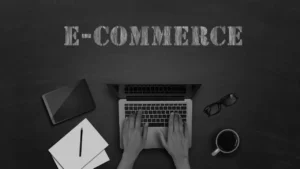In the fast-changing e-commerce world, making sure online users can reach online places, even those with disabilities, is not only a rule but also an ethical duty. An open e-commerce platform gives a chance to reach more people, improves user experiences, and helps form an inclusive digital space. To make this true, it’s important that training and understanding happen within teams working on e-commerce. This blog is a helpful guide for teaching about accessibility in the field of web development. It includes methods to educate developers, designers, and content creators. The blog also provides resources and tools useful for training, plus strategies for Building Accessibility-First Culture in E-commerce Teams in your company.
Educating Developers, Designers, and Content Creators
1. Developers:
- Understanding Accessibility Standards: Developers must have good knowledge of accessibility standards like Web Content Accessibility Guidelines (WCAG) and the Americans with Disabilities Act (ADA). Workshops and training sessions that happen often can help developers understand how to put these standards into coding practices.
- Inclusive Design Techniques: Promote the use of inclusive design techniques like creating keyboard navigation, checking screen reader compatibility, and applying semantic HTML. Also, making teams of developers and accessibility specialists can assist in filling knowledge voids.
2. Designers:
- Designers’ Training: Designers are very crucial in making e-commerce platforms accessible. The education must concentrate on designing for all types of users, even those who have difficulties with seeing, hearing, and understanding things correctly. This includes choosing color schemes that can be easily seen by everyone, offering text replacements for pictures and making certain the design adjusts to various screen measurements and devices.
- Design for Users: Start with user-centric design methods that focus on accessibility from the beginning. Engage individuals who have disabilities in the design stages for their input and to make sure designs are truly inclusive.
3. Content Creators:
- Writing Accessible Content: We should train content creators to write in plain language, use headings that are clear and descriptive, and give alternative text for images. Making sure that content is simple to read and comprehend for everyone is crucial in accessibility.
- Making Videos and Multimedia Materials Accessible: It is also important to provide training in producing accessible videos and other multimedia materials. This requires the inclusion of captions, transcripts, and audio explanations for the benefit of all users.
Resources and Tools for Training
1. Online Courses and Certifications:
- IAAP Certifications: The International Association of Accessibility Professionals (IAAP) has some certifications such as the Certified Professional in Accessibility Core Competencies (CPACC), which are designed to give thorough education about accessibility.
- LinkedIn Learning: Platforms such as LinkedIn Learning have courses that focus on digital accessibility, and they serve as an excellent source for ongoing education.
2. Accessibility Testing Tools:
- WAVE (Web Accessibility Evaluation Tool): This tool is designed to assist developers in finding and understanding the accessibility problems that exist on their websites.
- Axe: This tool is an accessibility testing instrument that combines with browsers to assist developers and testers in locating and addressing access problems.
3. Company-Wide Workshops and Webinars:
- Arranging frequent workshops and webinars about accessibility could be useful for the whole team to stay informed about current successful methods and instruments. When we invite accessibility experts, they can guide these sessions with their knowledge and offer practical experiences for everyone involved.
4. Accessibility Guidelines and Documentation:
- Make sure that there is a single place for all accessibility guidelines and documents. This could be in the form of checklists, coding rules, design principles and other similar things which can be easily used by everyone on the team.
Building an Accessibility-First Culture
1. Leadership Buy-In:
- To create a culture that values accessibility, we must first start at the top. Make sure those in leadership roles comprehend how vital it is to be accessible and are dedicated to making it a priority. The support of leaders is essential for assigning funds, establishing objectives regarding accessibility, and promoting an atmosphere of inclusiveness.
2. Integrating Accessibility into the Development Lifecycle:
- Require accessibility as a must-have in the development lifecycle. This implies thinking about it at each point, starting from the first design until the last testing. Add accessibility checks during code reviews and use automatic tools to identify problems beforehand.
3. Celebrating Accessibility Wins:
- Notice and have joy for successes in accessibility. When a new accessible trait is introduced or teams reach their set accessibility aims, it’s significant to recognize these accomplishments as they encourage groups and underline the value of accessibility.
4. Continuous Improvement:
- Accessibility is not a thing that you do once, it needs regular improvement. Keep checking and updating your accessibility methods, always be aware of fresh rules and technologies, as well as prompting users who have disabilities to give their input.
5. Inclusive Hiring Practices:
- Employing disabled individuals and making them part of your groups can bring direct viewpoints on accessibility. Their understanding may aid in forming items that are more comprehensive, as well as fostering a culture that genuinely appreciates accessibility.
Conclusion
The bases for forming an accessible e-commerce platform are training and awareness. By teaching the developers, designers, and content makers about accessibility methods and giving them the right resources plus tools while encouraging a culture of putting accessibility first – your organization can make a more inclusive digital experience for all users. Always remember, accessibility is not only related to obeying laws; it’s about forming a world where each person possesses identical entry into the digital economy.
Read More On
Benefits of Accessible E-commerce Websites
Accessibility Testing for E-commerce Websites
Implementing ARIA in E-commerce: Enhancing Accessibility
Accessible Payment Solutions for E-commerce
Mobile Accessibility for E-commerce Platforms



